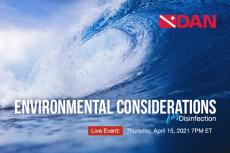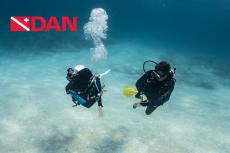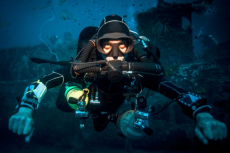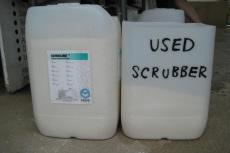Cylinder Safety
There are certain things in diving we tend to take for granted. Among them is the scuba cylinder. Cylinders are the lifeline of our sport, but they have become so steadfastly reliable that the community has come to expect them to be totally safe, sometimes at significant risk to customers and dive professionals alike. You rely on your cylinders for enjoyment, and safety – do you know how to keep them safe?
Standards
Cylinders in the United States are regulated by federal law, although state and local regulations may also apply. The majority of these laws and regulations, from organizations like the Compressed Gas Association (CGA), call for cylinders to be authorized for use only when inspected and tested to standards by a formally trained and certified individual. These regulations may seem overbearing at times, but they exist for good reason: A single aluminum 80-cubic-foot cylinder has approximately 1.3 million foot-pounds of potential energy (1 foot-pound is the amount of energy applied to 1 pound to move it 1 foot), and we as divers routinely expose them to salt water, high temperatures and rough treatment without a second thought.
It is a testament to the manufacturers that scuba cylinders we use last as long as they do and fail so rarely. Excellent technology can only get us so far, however. It is up to us as dive professionals to determine the safety of the cylinders that we use, fill and provide to our customers and students. Any cylinder that contains more than 40 PSI is considered high pressure under Occupational Safety and Health Administration (OSHA) guidelines and thus requires a hydrostatic test every five years and a yearly visual inspection. There has been some consternation over the source of the annual inspection for scuba cylinders, and while it is true that federal law does not explicitly dictate annual cylinder inspection, CGA guidelines require them and set a reasonable standard for enforcement in case of incident.
Testing our tanks
While it is easy to pay lip service to cylinder safety, it can be difficult to maintain a large fleet of rental tanks, or verify the safety of a tank that is brought to our compressor station for the first time, particularly with the demands of a busy season or a line of customers. Before you touch a cylinder, do a quick check for hydro and visual dates and any signs of damage. Dings, dents, deep scratches, signs of rust and pitting are all reasons to inspect a tank further before filling or reject it entirely. Listen for noises when cylinders are lifted or transported — a metallic rattle or rolling noise is often indicative of a valve stem that has backed out of a valve, and sloshing indicates the presence of water (and most likely corrosion along with it) inside a cylinder.
Speaking of corrosion, it is important to note that the days of water-cooled fill stations are over. Current recommendations opt for dry filling to avoid introducing water to cylinders through the valves and because the benefits of water cooling can be negated with a few extra seconds at a fill panel and some good ventilation. A single DIN valve face filled with water can introduce up to a teaspoon of water to a tank, which is enough to cause a steel cylinder left on its side to fail a hydro after just a year in the right conditions. Avoid introducing any water into cylinders at your fill station by blowing out valve faces before filling and keeping tanks out of the water until they are ready to be used.
Even if a cylinder has no apparent corrosion and makes no noises, give it a solid whack with a wooden mallet (or something similar that will not damage the tank face) approximately halfway down the cylinder before filling it. This is called a hammer test, and it is one way to quickly determine if there is anything seriously wrong with the cylinder walls just before filling. A solid bell-like tone indicates uniform wall thickness and most likely a healthy cylinder, while a change in pitch from the norm or from place to place around the circumference of the tank can indicate interior corrosion and reduced wall thickness. If this technique is new to you, it may take a while to get the hang of it, but it is a tried and true safety check to identify a tank that warrants a closer look.
- Log in to post comments






































































































